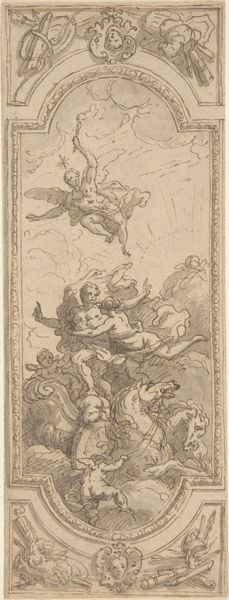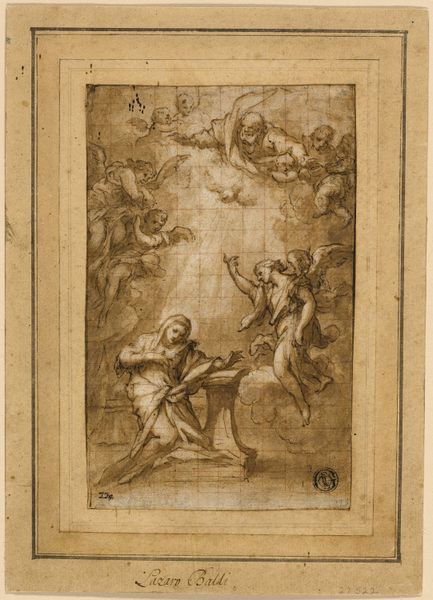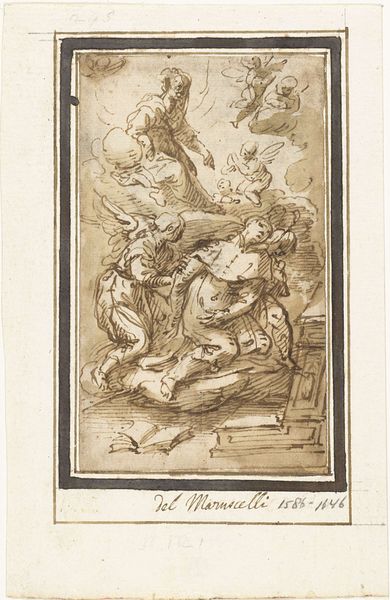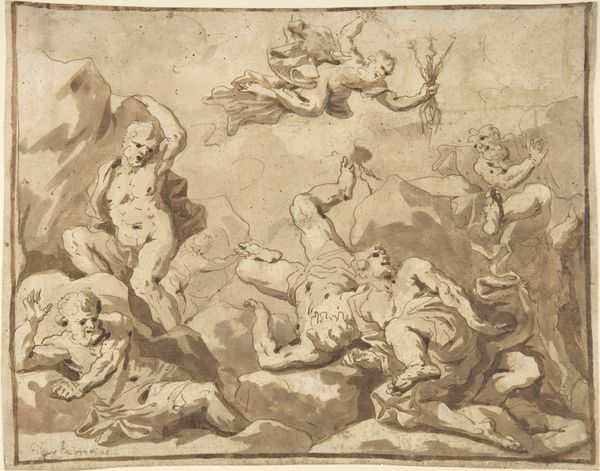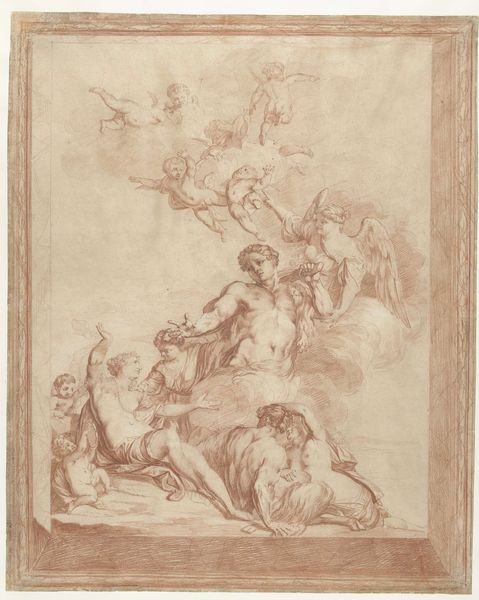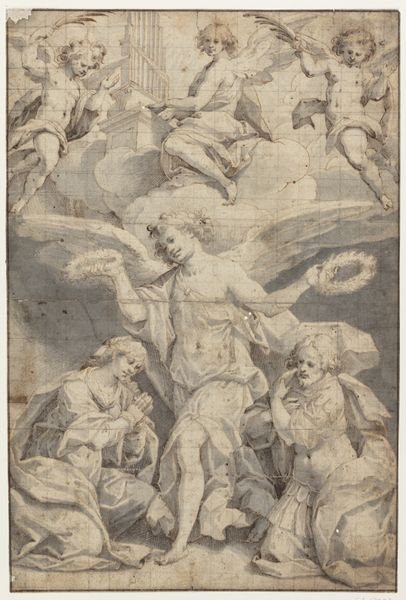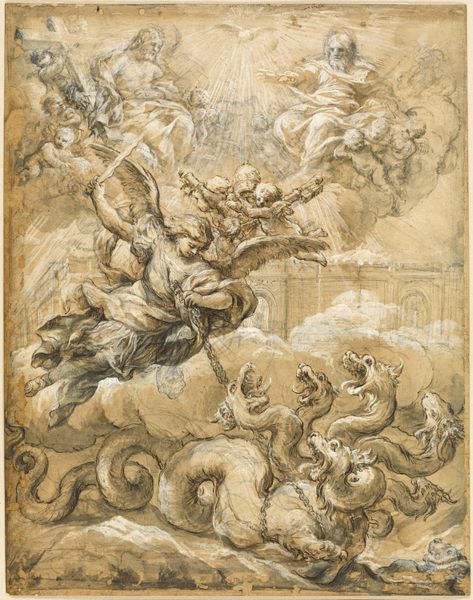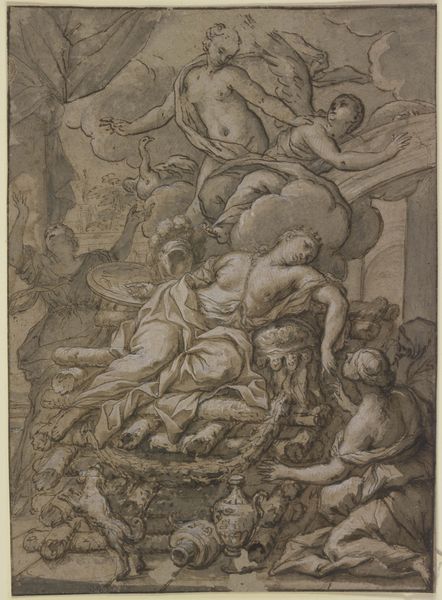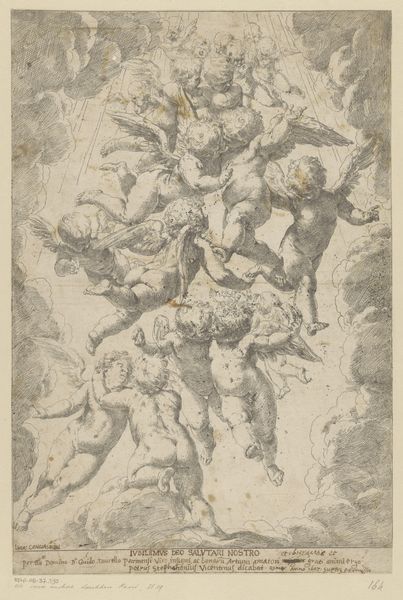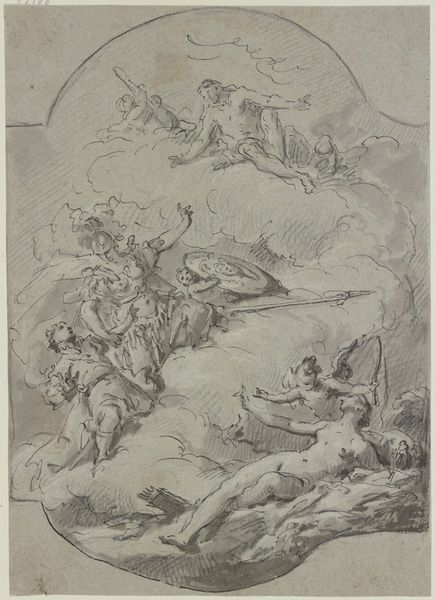
Daniel in the lions’ den in an elaborate frame 1556 - 1629
0:00
0:00
drawing, watercolor, ink, pen
#
drawing
#
allegory
#
baroque
#
ink painting
#
figuration
#
watercolor
#
ink
#
pen
#
watercolour illustration
#
history-painting
Dimensions: 252 mm (height) x 233 mm (width) (bladmaal)
Editor: Here we have Antonio Aliense’s "Daniel in the Lions’ Den in an Elaborate Frame," created sometime between 1556 and 1629 using pen, ink, and watercolor. The contrast between the frenzied figures on the right and the relative calm on the left strikes me. What symbols or stories do you see interwoven in this work? Curator: Indeed, that dichotomy is key. Look at how Daniel is centrally positioned, almost floating, protected by an angel – a symbol of divine intervention and righteousness. Notice the scales he’s holding? This symbol has appeared in art since the ancient Egyptians and often references justice. In Christian iconography, scales were used for weighing souls, suggesting a moral test. Editor: The scales make sense, given the context. So, is Daniel being 'weighed' here in some way? Curator: Perhaps not Daniel directly, but the concept of justice and divine protection. Consider the lions – often symbols of power and threat. Their inaction is as important as their presence. The putti or cherubs above emphasize the idea of divine spectacle, watching over and participating in the unfolding drama. Do you recognize other symbolic representations in the image? Editor: I notice the use of light and shadow. Doesn't that add another layer to the drama unfolding? Curator: Absolutely. The dramatic chiaroscuro, typical of the Baroque style, emphasizes the emotional weight of the scene, turning the biblical story into a powerful statement about faith and justice overcoming adversity. It visually connects the cultural memory of the Bible story and imbues it with continued cultural relevance. Editor: It’s fascinating to see how Aliense weaves together religious narrative, symbolic language, and dramatic visuals. Curator: Precisely, he presents an allegory about righteousness triumphing.
Comments
No comments
Be the first to comment and join the conversation on the ultimate creative platform.



